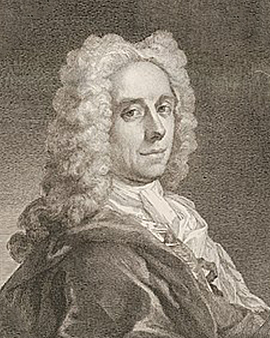Marco Ricci, who was born on June 5, 1676 in the heart of the Republic of Venice, in Belluno, where he was laid to rest on January 21, 1730, left an indelible mark on the world of art as an Italian painter. Ricci was able to benefit from the experience and guidance of his uncle, Sebastiano Ricci, who was famous for his portraiture. This familial partnership formed a powerful duo, as Marco's unique expertise in landscape and scenic painting perfectly complemented his uncle's portrait work. Ricci's life was marked by artistic transformation and personal challenges. In his youth, he was forced to leave Venice after being accused of killing a gondolier. This led him to Spalato, where he collaborated with the artist Antonio Francesco Peruzzini. Between 1704 and 1708 he created notable works in Florence, including the decoration of the Palazzo Pitti, a commission his uncle had received from the noble Ferdinando de' Medici. Ricci also participated in the decoration of Palazzo Fenzi, contributing to its splendor with a ceiling painting.
His talent did not go undiscovered and eventually took him beyond the Italian borders. Lord Manchester invited him to London in 1708, along with Giovanni Antonio Pellegrini, where he created elaborate stage sets for the Queen's Theatre in Haymarket. Here he also created a fine portrait of the British prima donna Catherine Tofts. After a period of study in the Netherlands, he returned to Italy in 1710 and invited his uncle to accompany him to London. Both artists returned to Venice in 1716. Here Ricci established a close relationship with the British businessman Joseph Smith, who became a major patron of Ricci and his uncle. Ricci's artistic vision extended far beyond his well-known landscape paintings. He also designed sets for Venetian theaters, including the Teatro San Giovanni Grisostomo and the Teatro Sant'Angelo. He also expanded his repertoire to include tempera painting on goatskin, and from 1723 he also produced etchings, although only 33 of these are known today. Today, we honor Marco Ricci's impressive oeuvre by producing high-quality art prints that beautifully reflect his coloring and attention to detail. Purchasing such an art print allows us to pay tribute to Ricci's extraordinary talent and unique style, which make his works unmistakable. It's like having a piece of fascinating Italian art history in your hands with a Marco Ricci art print.
×





.jpg)
.jpg)
.jpg)
.jpg)
_-_(MeisterDrucke-1657355).jpg)
_-_(MeisterDrucke-1657355).jpg)
.jpg)
.jpg)
_-_(MeisterDrucke-1131764).jpg)
_-_(MeisterDrucke-1131764).jpg)
.jpg)
.jpg)
.jpg)
.jpg)
.jpg)
.jpg)
.jpg)
.jpg)
.jpg)
.jpg)
.jpg)
.jpg)
.jpg)
.jpg)
.jpg)
.jpg)
_-_(MeisterDrucke-1371137).jpg)
_-_(MeisterDrucke-1371137).jpg)
.jpg)
.jpg)
.jpg)
.jpg)
_(title_on_-_(MeisterDrucke-1375827).jpg)
_(title_on_-_(MeisterDrucke-1375827).jpg)
_-_(MeisterDrucke-1368185).jpg)
_-_(MeisterDrucke-1368185).jpg)
_Accademia_Carrara_Bergamo_-_(MeisterDrucke-1499033).jpg)
_Accademia_Carrara_Bergamo_-_(MeisterDrucke-1499033).jpg)
_-_(MeisterDrucke-1368056).jpg)
_-_(MeisterDrucke-1368056).jpg)
.jpg)
.jpg)
.jpg)
.jpg)
_-_(MeisterDrucke-1330966).jpg)
_-_(MeisterDrucke-1330966).jpg)
.jpg)
.jpg)
.jpg)
.jpg)
.jpg)
.jpg)
.jpg)
.jpg)
.jpg)
.jpg)
.jpg)
.jpg)
.jpg)
.jpg)
.jpg)
.jpg)
.jpg)
.jpg)
_-_(MeisterDrucke-1369529).jpg)
_-_(MeisterDrucke-1369529).jpg)
.jpg)
.jpg)
.jpg)
.jpg)
.jpg)
.jpg)
_-_(MeisterDrucke-1368164).jpg)
_-_(MeisterDrucke-1368164).jpg)
_-_(MeisterDrucke-1371422).jpg)
_-_(MeisterDrucke-1371422).jpg)
_-_(MeisterDrucke-1368713).jpg)
_-_(MeisterDrucke-1368713).jpg)
.jpg)
.jpg)
.jpg)
.jpg)
_-_(MeisterDrucke-1375466).jpg)
_-_(MeisterDrucke-1375466).jpg)
.jpg)
.jpg)
.jpg)
.jpg)
.jpg)
.jpg)
_-_(MeisterDrucke-1368837).jpg)
_-_(MeisterDrucke-1368837).jpg)
.jpg)
.jpg)
_-_(MeisterDrucke-1375508).jpg)
_-_(MeisterDrucke-1375508).jpg)
_-_(MeisterDrucke-1453812).jpg)
_-_(MeisterDrucke-1453812).jpg)
.jpg)
.jpg)
.jpg)
.jpg)
_-_(MeisterDrucke-1417997).jpg)
_-_(MeisterDrucke-1417997).jpg)
_-_(MeisterDrucke-1375440).jpg)
_-_(MeisterDrucke-1375440).jpg)
.jpg)
.jpg)
.jpg)
.jpg)
.jpg)
.jpg)
.jpg)
.jpg)
_-_(MeisterDrucke-1367567).jpg)
_-_(MeisterDrucke-1367567).jpg)
.jpg)
.jpg)
_-_(MeisterDrucke-1554818).jpg)
_-_(MeisterDrucke-1554818).jpg)
.jpg)
.jpg)
.jpg)
.jpg)
.jpg)
.jpg)
.jpg)
.jpg)
.jpg)
.jpg)
.jpg)
.jpg)
.jpg)
.jpg)
.jpg)
.jpg)
.jpg)
.jpg)
.jpg)
.jpg)
.jpg)
.jpg)
_-_(MeisterDrucke-1375534).jpg)
_-_(MeisterDrucke-1375534).jpg)
.jpg)
.jpg)
.jpg)
.jpg)
.jpg)
.jpg)
.jpg)
.jpg)
_-_(MeisterDrucke-1315891).jpg)
_-_(MeisterDrucke-1315891).jpg)
.jpg)
.jpg)
.jpg)
.jpg)
Varia_Marci_Ricci_Pictoris_prestan_-_(MeisterDrucke-1375678).jpg)
Varia_Marci_Ricci_Pictoris_prestan_-_(MeisterDrucke-1375678).jpg)
.jpg)
.jpg)
.jpg)
.jpg)
.jpg)
.jpg)
_-_(MeisterDrucke-1081243).jpg)
_-_(MeisterDrucke-1081243).jpg)
.jpg)
.jpg)
.jpg)
.jpg)
.jpg)
.jpg)
.jpg)
.jpg)
.jpg)
.jpg)
.jpg)
.jpg)
.jpg)
.jpg)
.jpg)
.jpg)
.jpg)
.jpg)






